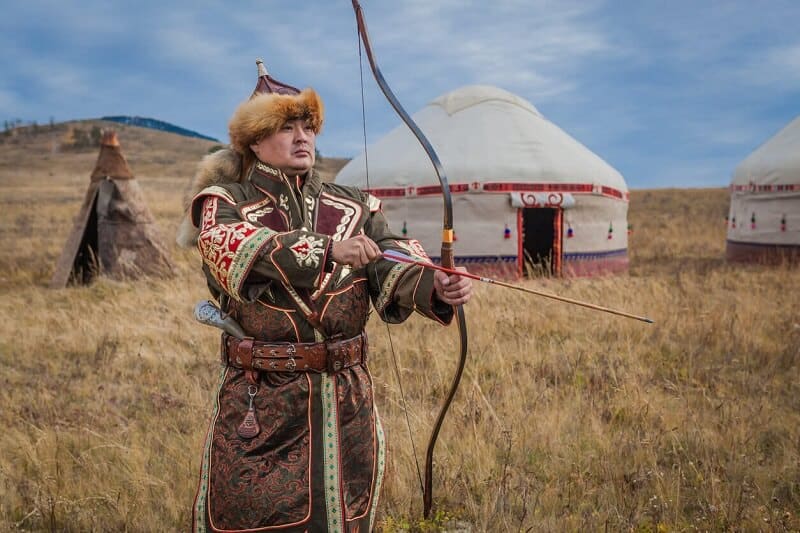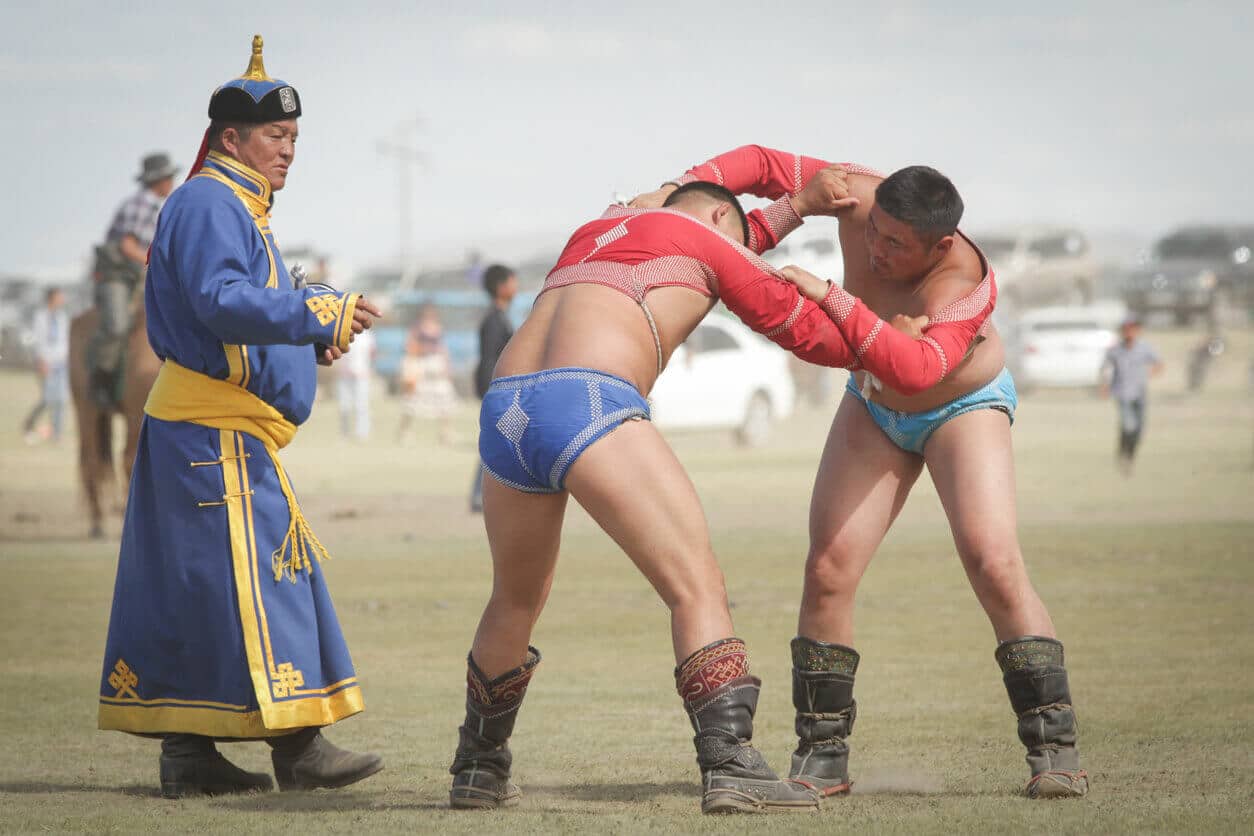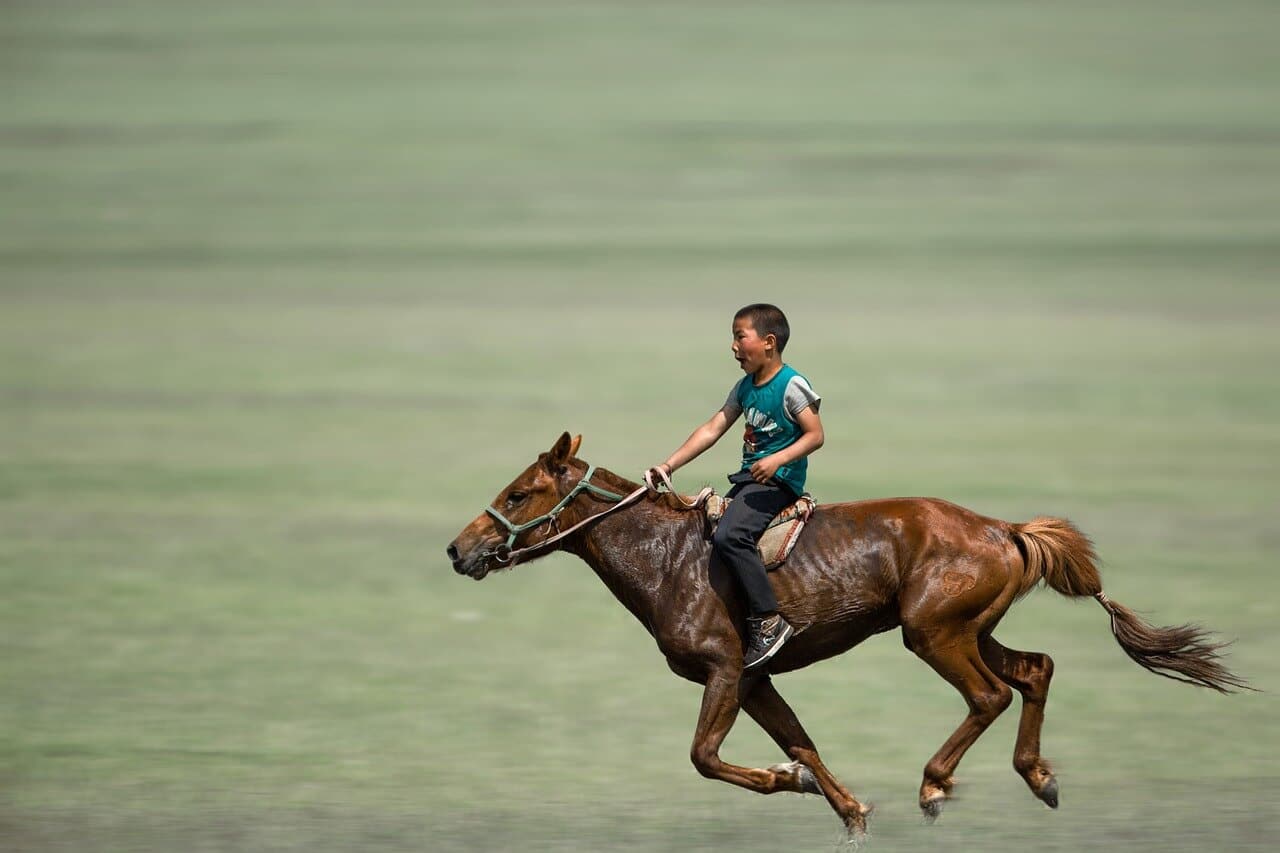The Mongolian Horse race is a test of both horse and rider. The track is approximately 15 kilometers long and the horses must navigate a series of obstacles along the way. The Mongolian Horse race is considered to be one of the most challenging horse races in the world.
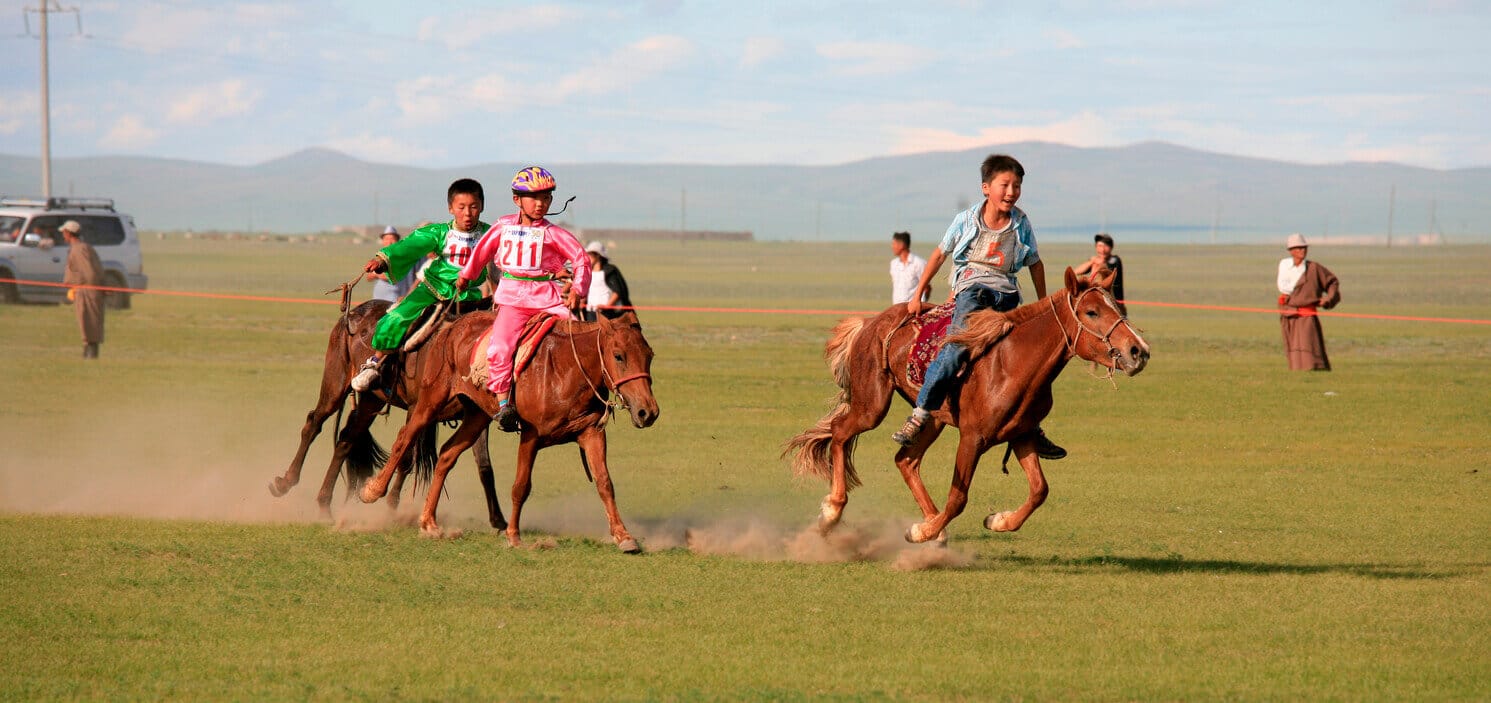
Horse racing is an important part of Mongolian culture. It is said to have originated with the nomadic tribes who inhabited the steppes of Central Asia. Horse racing was a way for these people to showcase their skill in horsemanship and earn prestige within their community.
In Mongolia, both male and female children partake in horse racing. The National Naadam requires that all participants be over the age of seven. Due to rising safety concerns, protective gear is now mandatory for all jockeys.
Training to Win the Mongolian Horse race
Horses participating in the competitions are prepared for at least a month before the start of a festival. The characteristics of a Mongolian race horse, according to Mongols, are passed down through the mares who give birth to them via their maternal line.
So before purchasing a racehorse, owners or raisers check the horse’s lineage meticulously.

Horse trainers can forecast which horse will be a winner by looking for both external and internal signs. The training process is different for every horse, based on the animal’s age and characteristics.
The aim of each three stages is to achieve weight reduction, acquire a minimal speed, and then reach the maximum speed.
The horses start with short-distance gallops of about a kilometre before progressing to longer distances roughly two weeks prior to the Naadam. The distance covered gradually increases, and the horse is closely monitored by the horse trainer to ensure that its fitness level is appropriate for the race.

The training of a racehorse is quite demanding, but it’s only for the horse. It’s fed a restricted diet and subjected to an intensive exercise program during which its droppings and perspiration are examined for color and consistency. After working out, sweat is scraped off the horse with a long wooden pallet called a khusuur.
The consistency and color of the sweat and droppings, as well as the regularity of breathing, are all indicators that a horse is ready for a race or should continue training.
Mongolia Horse Racing Competitions
The Naadam Festival race, Tsagaan Sar Lunar New Year race, spring horse race, and Ikh Hurd race are just a few of the major horse races held in Mongolia each year. In terms of importance, the Ikh Hurd race is the biggest.
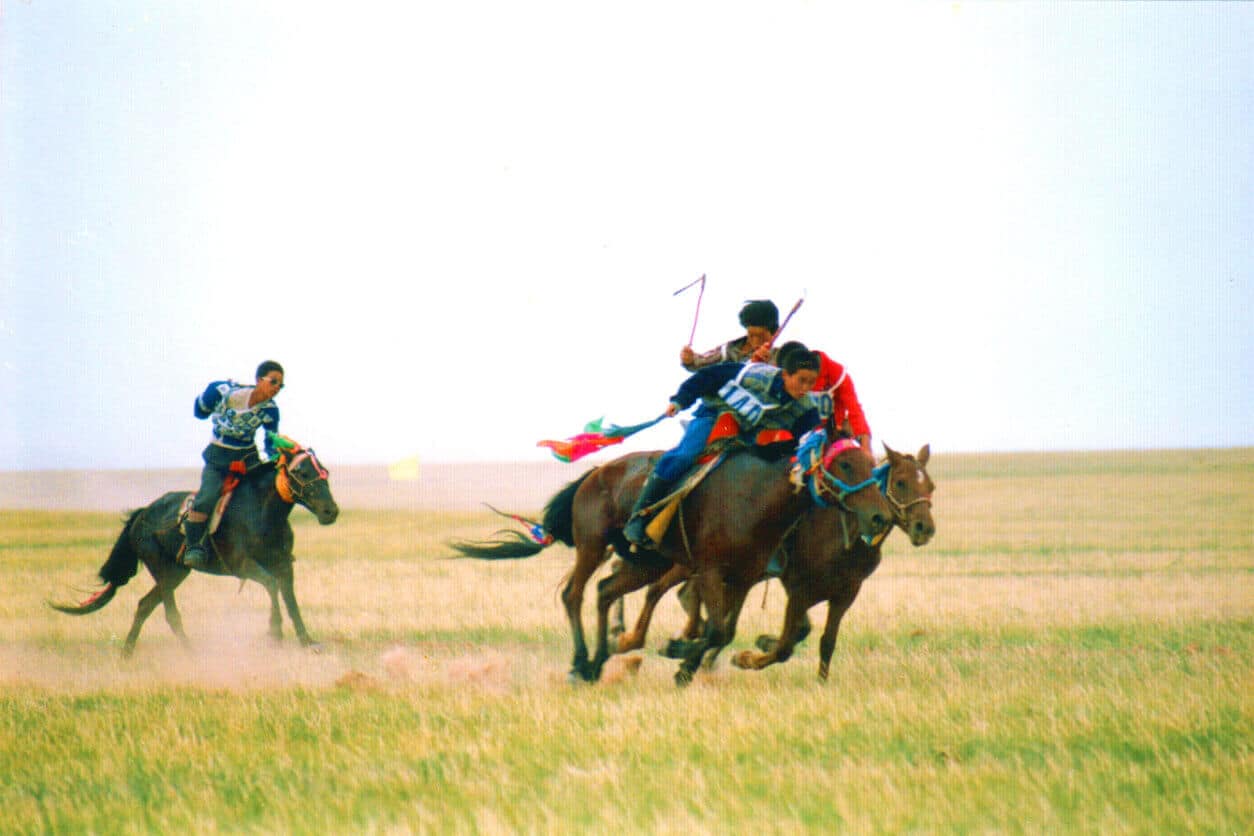
The Ikh Hurd Race is Mongolia’s most prestigious race, with the best horses from every province competing for top position. The top horses, trainers, and riders of Ikh Hurd’s first five places earn points that are twice as valuable as those won during the State Naadam Festival.
In terms of popularity, Naadam is the most popular national holiday and traditional sports event.
Horse racing is one of the “three manly arts” of Naadam festival. Horse racing is the second-most popular event in Mongolia, after traditional wrestling and of course there is archery. The horse races are a central part of the Naadam festival, and all horses racing are placed into one of six categories based on their age.
The races themselves take place in an open field outside of urban areas, and the distance that each horse must run varies depending on which category they have been placed into.
Horse racing is completed in horse age groups and only male horses’ race.
- Daaga is a two-year old horse ( they race roughly 10-12km )
- Shudlen is a 3-year-old horse ( they race 14-16km )
- Khyazaalan is a 4-year-old horse( racing 18km)
- Soyolon is a 5-year-old horse ( racing 22-24km)
- Azarga is a stallion more than 5 years old (they race 22-24km)
- Ikh Nas is a castrated horses more than 5 years old ( they cover roughly 25-27km)
Just so you know, Mongol horses have excellent endurance. Though foreign breeds are faster than Mongolian horses, they are usually exhausted by the end of the run, while the Mongolian horses still have wind.
Interesting facts about Mongolian Horse Race
- Before the race in the Naadam festival, all horses go through a registration process which includes having their hair cut and marked. Furthermore, inspectors check the horses’ teeth to get an estimation of their age.
- Many believe that those who stand in the dust of the Soyolon race will be blessed until next Naadam. Therefore, it’s no surprise if you see many businessmen or even crowds of people wearing traditional garments waiting for the Mongolia ‘strong-men’ and fastest Soyolon horses during State Naadam Festival.
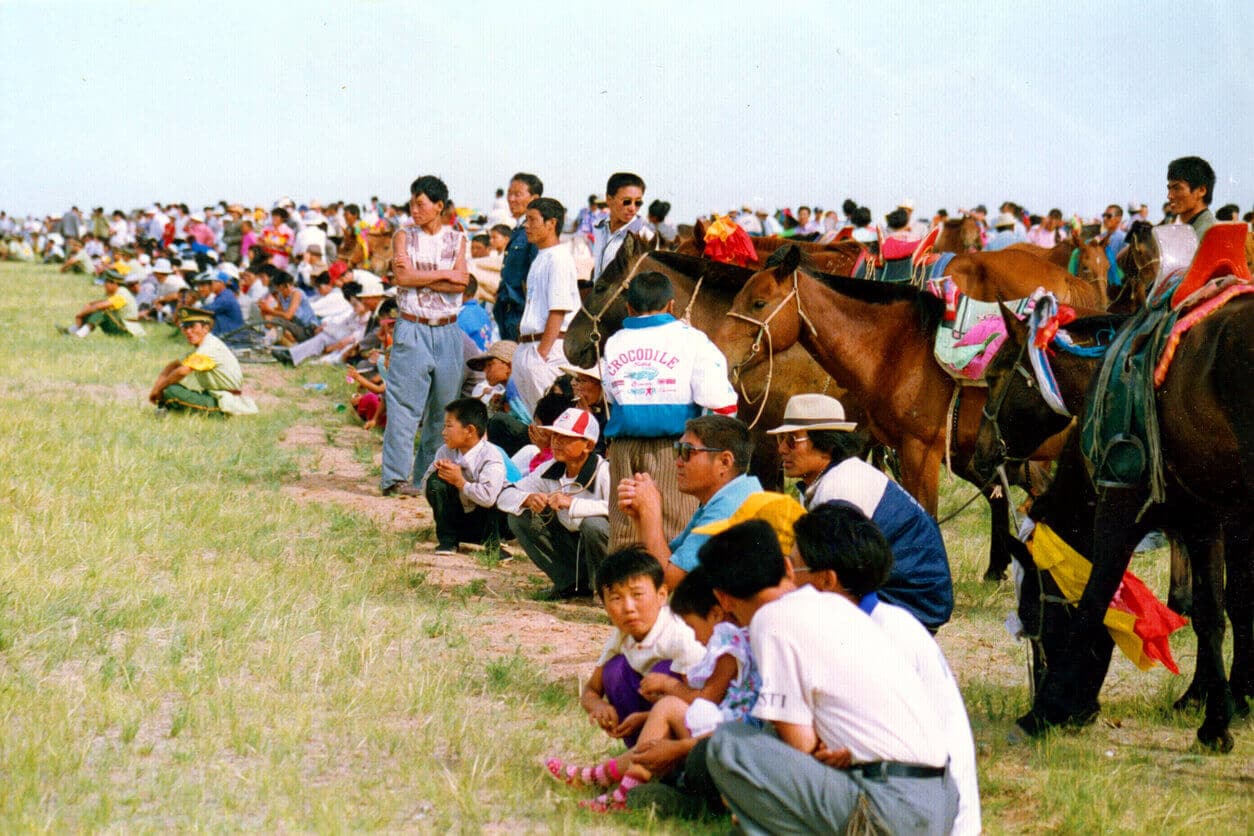
- The first five horses to cross the finish line will receive the primary prize, while the other contestants will be caught in order of arrival. In the DAAGA (2-year old horse) competition, however, the last Daaga is caught and receives an equal prize to that of the winner-the title “Bayan Hodood” (which means “rich stomach”).
- A Mongolian horseman’s education begins when they are young. Parents put their children on a horse and hold them there until they can stay without assistance. By age 6, kids can compete in races; by 10, they start to learn how to make tack from materials like wood or leather. There aren’t many books on topics such as horse training or medical care since information is passed down orally from parent to child.
Hello. My name is Anujin. I was born and raised in Ulaanbaatar, the capital city of Mongolia. I am senior writer at CorrectMongolia, where I share the culture , tradition of my country.
Do you have any questions or comments about this post? Let us know in the comments below!
Related Content:
Mongolian Archery: 4 interesting things about them
The Mongolian Wrestling: 6 Interesting Facts
Naadam Festival 3 Unique Events You Won’t Want to Miss
Share to Public

